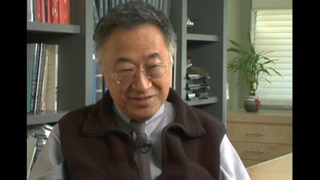Interviews
Her experience as a Japanese-American schoolchild in Oceanside, California, after the bombing of Pearl Harbor
I was seventeen, I was a senior in high school. We were making ready; this was in... Pearl Harbor happened in December. And in January all the Japanese kids stopped going to school. I do remember that because I went to my civics class, and... this was the Monday after Pearl Harbor, and the teacher in our civics class was talking about 'the Japs' bombing Pearl Harbor. And you felt like you did the bombing because, as far as they were concerned, you were a Jap.
Date: May 22, 1998
Location: California, US
Interviewer: John Esaki
Contributed by: Watase Media Arts Center, Japanese American National Museum.
Explore More Videos

Both Japanese and American identities though Japanese dance
(1918-2023) Nisei Japanese kabuki dancer

Family background of Fredrick Yoshihide Sasaki
(b. 1918) Issei businessman in Canada

Anti-Japanese sentiment at the time of World War II
(b. 1918) Issei businessman in Canada



Lack of political power led to camps
(1924-2018) Researcher, Activist

Results of being more American than Japanese
(1924-2018) Researcher, Activist

Trying to convey the meaning of the songs
(b. 1981) Enka Singer

Internship on a Native American reservation in Arizona
(b.1952) Master drummer, artistic director of the Taiko Center of the Pacific


Different tension between East Coast and Los Angeles
Japanese American Creative designer living in Japan

Differences between American and Japanese taiko
(b.1943) Shin-issei grand master of taiko; founded San Francisco Taiko Dojo in 1968.

Meeting Japanese Americans from the mainland in MIS
(1923-2011) Lawyer, MIS veteran, founder of Francis and Sarah Sogi Foundation


His experiences in Chicago after WWII
(b.1929) Pioneer medical researcher in tissue transfer and organ transplantation.
